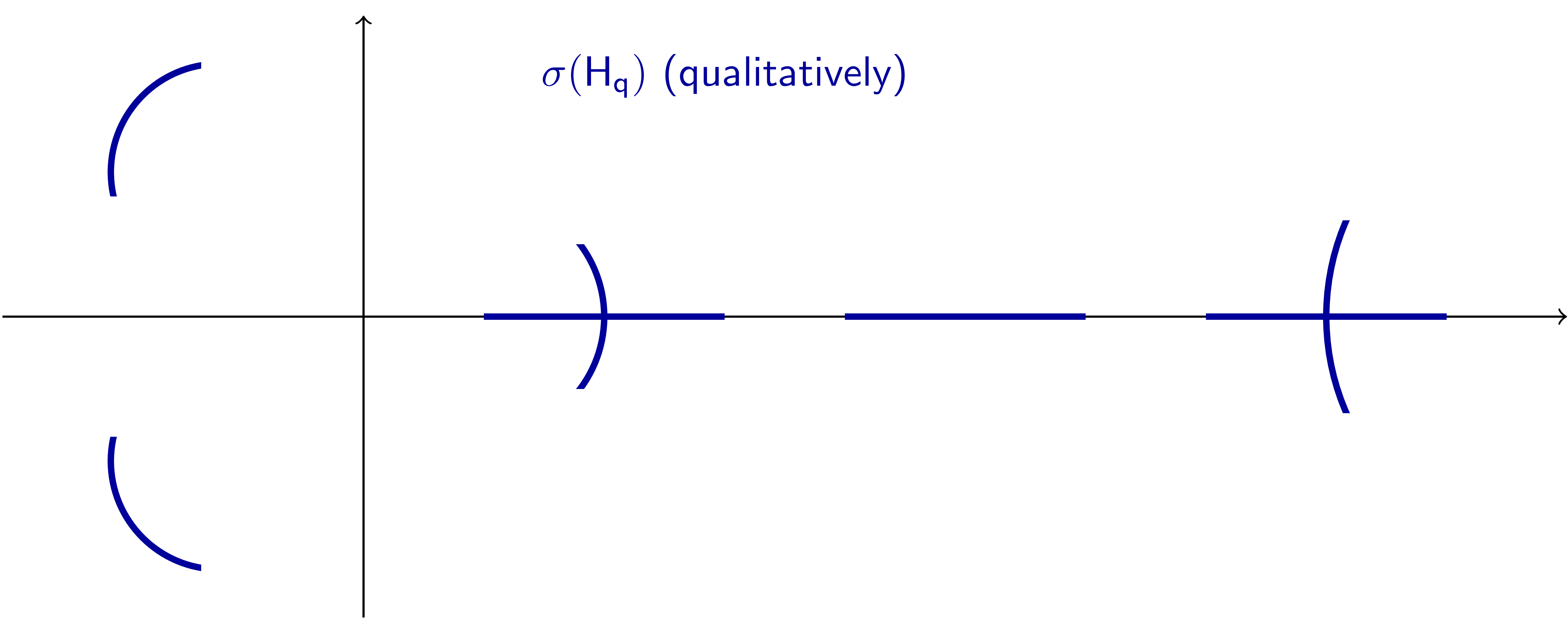Research
Computing Spectra of Periodic Operators
Research article:
- Jonathan Ben-Artzi, Marco Marletta, Frank Rösler; Universal Algorithms for Computing Spectra of Periodic Operators, Numer. Math. (2022). (supported by the European Union’s Horizon 2020 Research and Innovation Programme under the Marie Skłodowska-Curie grant agreement No 885904.)
A Matlab implementation of the algorithm is available here.
Overview:
Hamiltonians $\mathsf{H=-\Delta+V}$ with periodic potentials describe the movement of electrons in periodic media such as crystals. The spectra of Hamiltonians, which are periodic with respect to some lattice $\mathsf L$, are known to have a band structure, which provides a mathematical explanation for the existence of physical phenomena like conducting, insulating and semiconducting materials.
Their discrete analogues, which are obtained by replacing the derivatives in $\mathsf{-\Delta}$ by their finite difference approximations $\mathsf{\frac{\partial f(x)}{\partial x_i} \approx \frac{f(x+h_i)-f(x)}{h_i}}$, are of similar physical importance. Due to their discrete nature, such operators are generally more accessible for numerical algorithms than continuous operators. A notable physical application is the spectrum of graphene (a 2-dimensional material consisting of carbon atoms at the vertices of a hexagonal lattice) which has gained considerable attention in the analysis community in recent years. The general structure of periodic discrete Hamiltonians are infinite matrices of the form
$$
\mathsf
A = \begin{pmatrix} \ddots & \ddots & \ddots & & & & \\
& \mathsf{c_0} & \mathsf{a_0} & \mathsf{b_0} & & & \mathsf 0& & \\
& & \mathsf{c_1} & \mathsf{a_1} & \mathsf{b_1} & & & & \\
& & & \ddots & \ddots & \ddots & & & \\
& & & & \mathsf{c_{N-1}} & \mathsf{a_{N-1}} & \mathsf{b_{N-1}} & & \\
& &\mathsf 0 & & & \mathsf{c_0} & \mathsf{a_0} & \mathsf{b_0} & \\
& & & & & & \ddots & \ddots & \ddots
\end{pmatrix}
\tag{1}
$$
In either case (continuous or discrete), the periodicity assumption allows to perform a Floquet-Bloch decomposition of the operator. That is, the Hamiltonian $\mathsf H$ can be represented as a direct integral over fibres $\mathsf{\widetilde H(\theta)}$
$$
\mathsf{H = \int^\oplus_{Q^*} \widetilde H(\theta),\mathrm{d}\theta,}
$$
where $\mathsf{Q^*}$ is the fundamental cell of the dual lattice $\mathsf{L^*}$ and $\mathsf{\widetilde H(\theta)}$ are operators on $\mathsf{Q^*}$, which depend analytically on the parameter $\mathsf\theta$. It is well known that $\mathsf{\sigma(H)=\bigcup_{\theta\in Q^*}\sigma(\widetilde H(\theta))}$. Hence, the spectrum of $\mathsf H$ can be computed by computing the spectra of all $\mathsf{\widetilde H(\theta)}$ individually.
In the case of discrete Hamiltonians, the $\mathsf{\widetilde H(\theta)}$ are finite matrices, which vary continuously with $\mathsf\theta$. Accordingly, their spectra are given by a collection of one-parameter curves in the complex plane.
The following figure shows our numerical approximation of these curves for an operator of the form (1) with
$$ \mathsf{(a_i) = (1, 0, 1, 0, 2)} $$
$$ \mathsf{(b_i) = (-1, -2, 1, 3\mathrm i, -5)} $$
$$ \mathsf{(c_i) = (2\mathrm i, -3\mathrm i, 2\mathrm i, 0, \mathrm i) }$$



-
[Shin. On the shape of spectra for non-self-adjoint periodic Schrodinger operators. J. Phys. A, 37(34):8287-8291, 2004] ↩︎